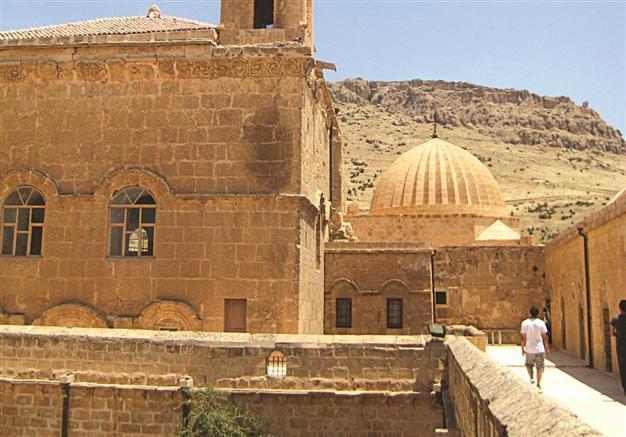Tourism blooming in eastern Turkey thanks to Kurdish peace bid: report
ISTANBUL

Tourists visit a Syriac monastery in the southeastern Turkish province of Mardin.
The Kurdish peace process has helped boost the tourist flow to eastern and southeastern Turkish provinces that were roiled by violence in previous years, a report issued by Turkey’s top tourism organization has found, underlining the significance of peace amid tension on the country’s southern borders.According to the “Resolution Process and Regional Tourism Report” released by the Association of Turkish Travel Agencies (TÜRSAB), the number of local and foreign tourists visiting the region reached 1.5 million in 2012, and surpassed 2 million in 2013.
The resolution process, also known as the peace process, refers to the government-led initiative aimed at ending the three-decade-long conflict between Turkey’s security forces and the outlawed Kurdistan Workers’ Party (PKK).
The increasing tourism to eastern and southeastern provinces has also given a boost to touristic facilities in the region, whetting the appetite of entrepreneurs who want to take a share in the growing market, the report also found.
The number of licensed touristic facilities in the eight most popular provinces in the region has almost doubled over the past 13 years, rising to 188 in 2013 compared to 102 in 2000. The bed capacity has also recorded an impressive 165-percent increase from 11,272 to 29,935 over the same period, the TÜRSAB report stated.
The development of tourism in the region has also triggered a remarkable increase in air transportation to the eastern and provinces.
The domestic passenger number flying to and from 16 airports in the region was 3.8 million in 2007, while international passengers were only at 148,000. In 2013, however, the number of airports reached 19, with the domestic passengers number rising to 10.5 million and the international passengers number reaching 484,900, according to the report.
TÜRSAB Chairman Başaran Ulusoy said tourism was one of the main sectors providing employment opportunities to the region, underlining that the boost in the sector had already triggered investments in other industries and increased interest in the long-neglected east of the country.
“Tourism has unfolded the real potential of these provinces and has begun to attract other investments,” Ulusoy was quoted as saying in the report.
He said the tourism sector aimed to raise the number of local and foreign tourists visiting region to 5 million by 2023, the 100th anniversary of the foundation of the Turkish Republic.
However, concerns over the sustainability of the peace process have recently escalated over deadly protests and tension sparked by the situation in the Syrian Kurdish town of Kobane, which has been under siege from Islamic State of Iraq and the Levant (ISIL) jihadists for over a month.
Referring to the countrywide clashes that led to the deaths of some 37 protestors, Ulusoy promised that “the recent incidents will not stop [us from reaching] our objectives.”
Particularly condemning the destruction of museums and culture centers during the protests, he said “the attacks hurt the tourism sector.”
“The places that house these assets, which are presented to world culture and heritage and boost Turkey’s prestige, should be treated delicately/ We promote this region in tourism with our historical artifacts as well. People shouldn’t damage their own property,” Ulusoy said.
















